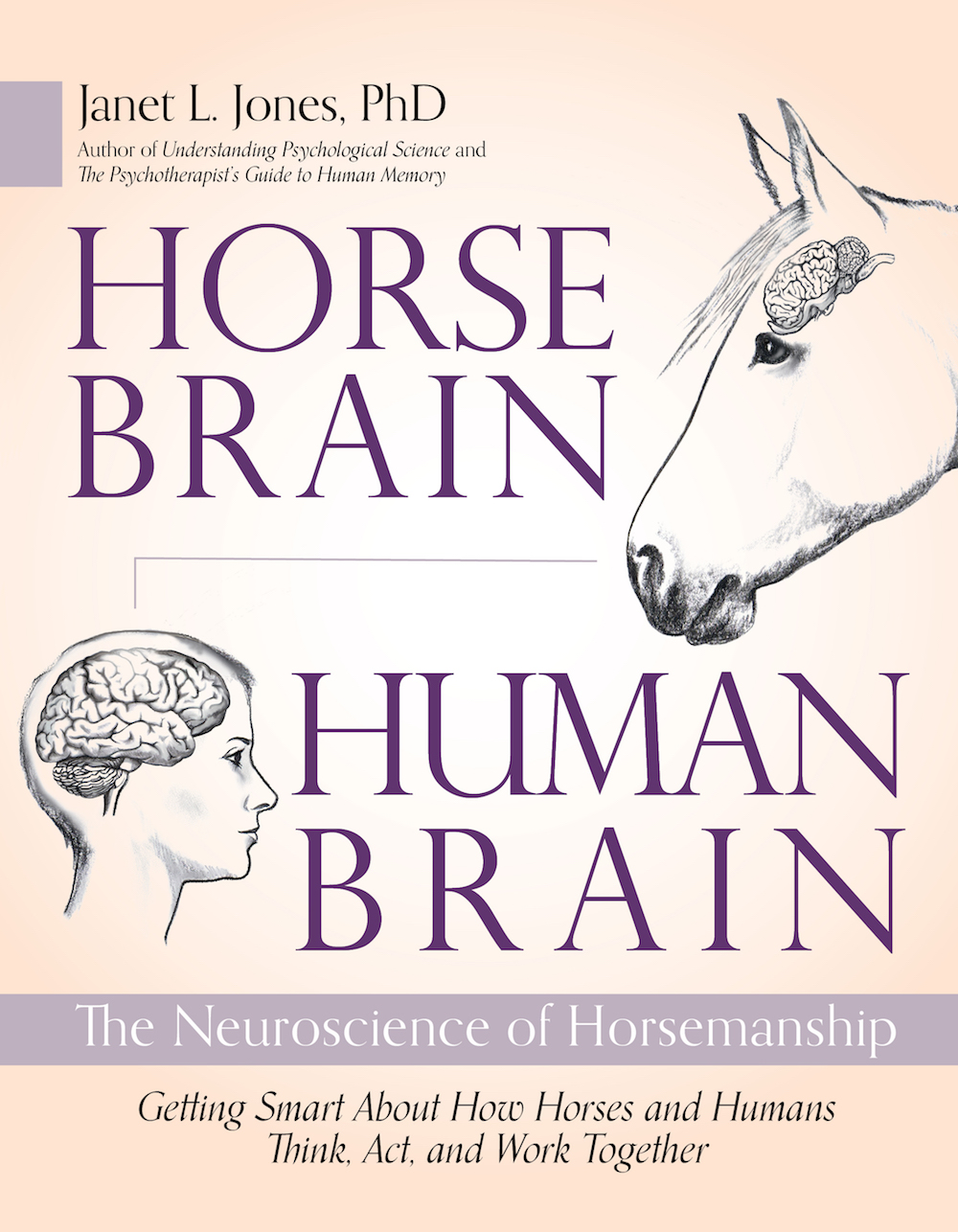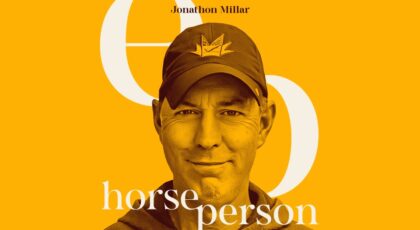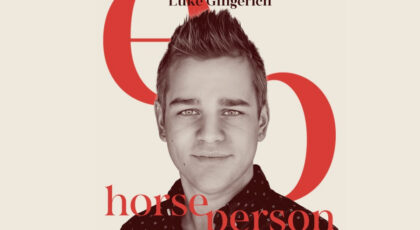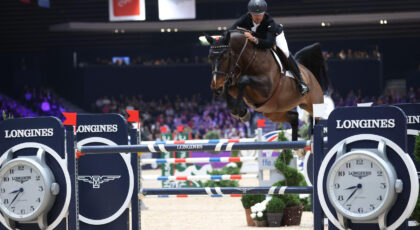Young horses are often awkward in learning to back up while under saddle.
It’s an unnatural movement, both physically and mentally. Most youngsters don’t yet have the musculature and physiological coordination to back smoothly.
They also don’t understand the request because it’s so foreign to their mental natures. Horses move forward or (rarely) sideways. They don’t often back up. And it requires contact with the bit that many youngsters don’t yet oblige.
For these reasons, I delayed my green Warmblood’s first lessons in backing. True needed to know how to move forward first, at a walk, trot, and canter. And he needed to know how to halt … not perfectly yet like in a dressage competition, but obediently, softly, and in decent balance, with his hind legs under him rather than straggled out behind his tail.
These challenges—plus the killer birds—gave us plenty to work on for six months or so!
In keeping with the baby steps that brain-based training requires, I often teach new skills from the ground before asking from the saddle. So, during our happy little walkabouts on slow days, I begin occasionally halting True and asking him to take a step back.
He is reluctant, even perhaps surprised, but from the ground I can usually bump the halter enough to move him back. I do not use it harshly, shake or jerk the rope, or expect him to back quickly. All he has to do is take a step backwards when I softly bump the lead rope toward his chest.
It’s fine to use a vocal command like “back” at first. It’s only a temporary step and gives babies an additional cue as reminder.
Now that he’s doing fairly well with all those maneuvers, I hop on and teach True to take a step or two in reverse under saddle. First, I walk True forward in a relaxed gait and ask him to halt.
Once stopped, he must soften his head, neck and mouth, before I can ask for the reverse. Without that, I’ll end up with a horse who stiffens and inverts his neck to reverse. And a few months after that, he’ll likely begin to stiffen and invert his neck to move forward. The habit of inversion also strengthens muscles under the horse’s neck, allowing him to strain against a rider all the more in the future.
So, I begin with the softening—it prevents problems down the road.
To teach backing from the halt, I hold my hands low (near my knees) and wide, touching True’s mouth through the reins with my fingers, quickly and gently. Curiosity causes most babies to drop their heads for a better feel of what’s going on there. As soon as he softens or drops, I heap on the praise and the pets, to let him know he did the right thing. We practice this, often at the end of a ride so he gets the added reward of a dismount.
After a week or so of practice at lowering his head and softening his mouth, we are ready to proceed.
True’s breeder told me he disliked contact from the start, so I keep that in mind. It really helps to learn a horse’s background and quirks so you know what to expect.
One day, I walk True forward, halt, and ask for the softening as usual. He complies. I continue gently bumping with my fingers, in a random motion, and say “back.” He stands rooted to the ground. I can almost feel him glue his hoof soles to the sand.
I use a little more hand pressure, but still with a touch-touch-touch texture, not constant. He grabs the bit and drags it from me, stretching his neck and nose as far out as he can, pulling hard against my hand. Okey-dokey, Trouper, I get the message!
I do not release my hand, and True is unhappy. He pulls, wagging his long neck back and forth at the end of the reins, as if to dislodge my hand with lateral movement. Still I do not release. What’s really important is that I also do not scold, or pull, or harden my hand. I just stay where I am, neutral but unyielding. The moment he yields to my hand, I will release all pressure.
On that first day, True never let go. I finally asked a friend to urge him backward from the ground using touches on his chest, while I remained on his back. He took one step back, received my strokes, and that was it. But I could see that we had a long road ahead when it came to stepping backward under saddle.
In the first week, he never backed on command, not one stinkin’ step! Twice, I had to dismount to make him back manually from the ground, something I hated to do for its implicit equine satisfaction… but there was no friend around to help.
The following week, True took one step backward. He did so quite grudgingly, I thought in my grumpy and anthropomorphic mindset. But it was a step in the right direction, and True received a quadruple reward for it—strokes on the neck, praise, a dismount, and a return to his pasture.
Now we’re on our way!
Related reading:
Brain-Based Horsemanship is a weekly column that chronicles Janet Jones, PhD, and her journey with True, a Dutch Warmblood she trained from age three using neuroscience best practices. Read more about brain-based training in Jones’ award winning book Horse Brain, Human Brain.

A version of this story originally appeared on janet-jones.com. It is reprinted here with permission.




 August 2, 2023
August 2, 2023 




























